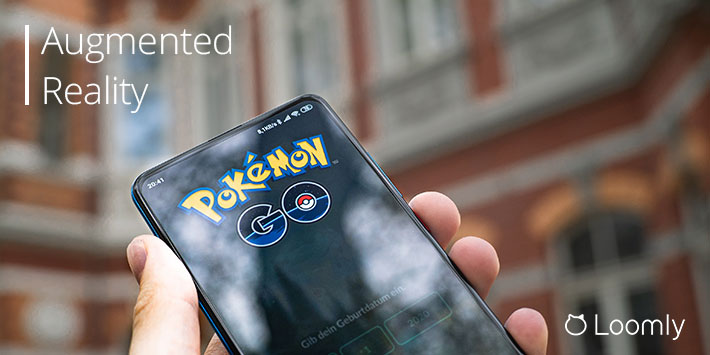Augmented Reality: 8 Ways Your Brand Can Take Advantage of AR Right Now
If you’ve played around with TikTok or Instagram filters, you’ve encountered augmented reality (AR). Immersive technology has been around for a while now, but advancements are making it easier for brands to leverage AR to offer a better customer experience.
The AR technology market is growing, with projections for 2023, valuing it at over $18 billion (USD). Coupled with the fact that the consumer mobile AR app market is predicted to exceed $15 million by 2022, it shows that AR will become integral to our online shopping.
In this guide, you’ll discover what augmented reality is, how it benefits brands, and how you can harness its power in ecommerce to boost brand awareness, increase sales, and improve the customer experience.

Manage all your social media accounts in one place.
Craft, schedule, & auto-post content to all your social channels, then track analytics and manage interactions from a single, easy-to-use dashboard.
What is Augmented Reality?
Augmented reality (AR) is a technology that augments our physical world by adding layers of digital information on top of it. So when you look at an AR screen, you see the original physical real-life environment with superimposed computer-generated graphics, which changes the perception of what you see.
Digital information superimposed on the natural environment can be either constructive (where it enhances or adds to it) or destructive (covers it), but the idea is to merge digital and physical reality seamlessly.
Augmented reality (AR) vs virtual reality (VR)
There are four main differences between AR and VR:
1. Environment
AR augments (adds to) an existing environment by introducing computer-generated images and effects. But VR is a digital-only environment with no real-life objects.
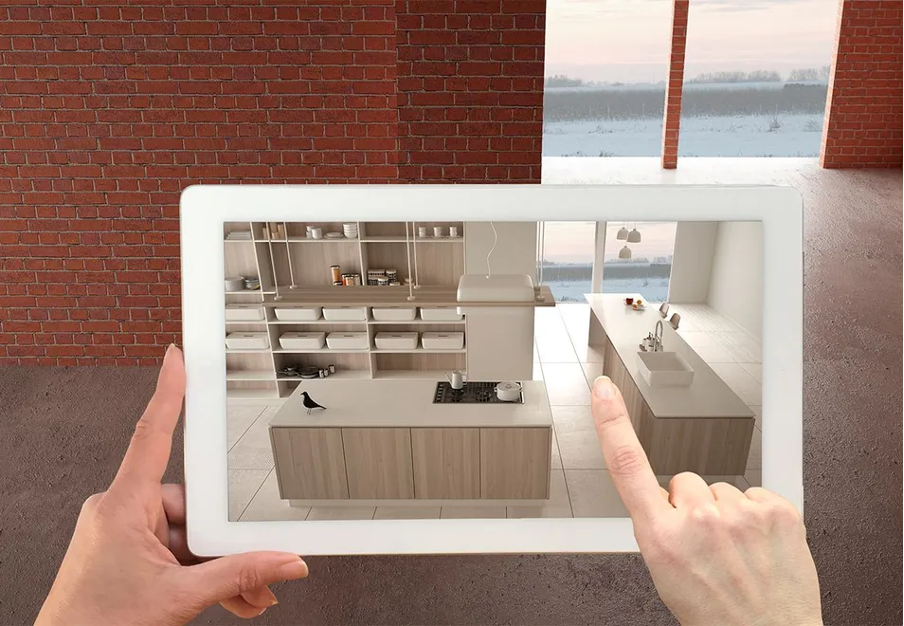
Credit: Lego
2. Equipment
AR works seamlessly on your mobile phone or tablet without any other equipment. The brand has already developed the AR app for you to view. But with VR, you’ll need to wear a special headset and might need to use a special controller.
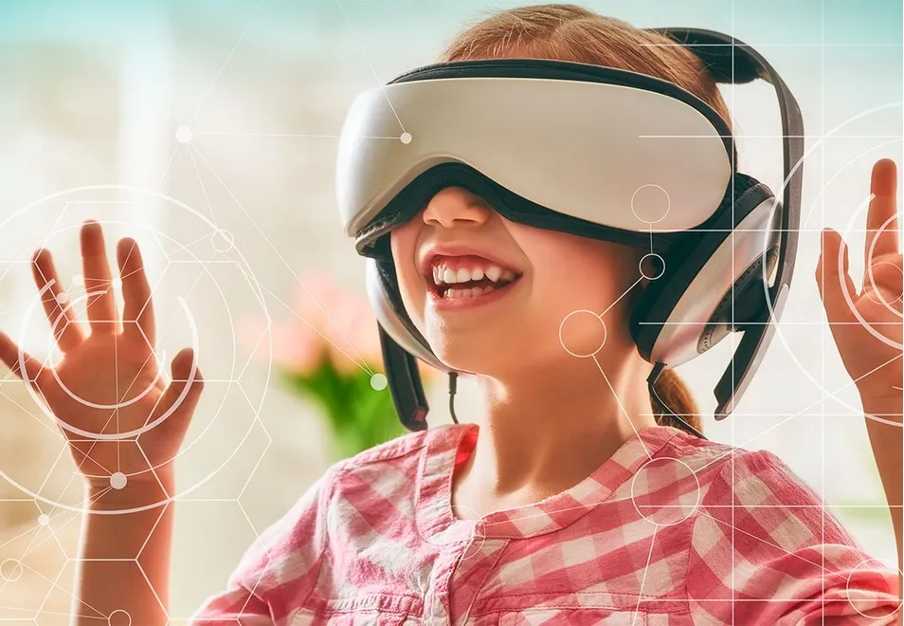
Credit: Lego
3. Space
AR can be experienced anywhere. But with VR, you’ll need some space to move around in or make sweeping motions to get the whole experience.
4. Energy
VR devices use more power than AR because they generate an entire digital world rather than combining a virtual and a physical world.
The Benefits of Augmented Reality (AR) for Brands
When you implement AR technology on your website, you can expect to:
1. Increase customer engagement
AR increases customer engagement by 66% because it keeps customers engrossed in your products. And, the longer a customer spends on your site, the more likely they are to purchase from you.
Even if they don’t buy during the first visit, their initial experience means they’ve developed a relationship with your brand and products, increasing the likelihood of a future purchase.
2. Attract new shoppers
You can reach new customers and generate buzz about your brand by creating engaging AR campaigns. 63% of customers say AR would transform their shopping experience.
AR technology elevates a brand’s status in the customer’s eyes and gives them greater confidence about the product quality before they buy.
3. Boost conversion rates
AR increases the average mobile conversion rate from 3.5% to 11%.
In addition to attracting and keeping people on your site longer, AR can actually boost sales. AR offers more information than static 2D images through its 3D views. It can also show what a product looks like in a consumer’s space, so it’s much easier for them to make a purchasing decision confidently.
4. Increase prices
Around 40% of consumers would be willing to pay more for a product if they could experience it through AR. So, by offering an AR experience, you can safely increase prices and grow your revenue.
5. Reduce returns
In addition to selling more at a higher price, you can also expect to retain more of your revenue, as AR reduces returns by 35%. Again this comes down to the fact that AR helps consumers choose the right product the first time.
8 (Clever) Augmented Reality Examples
Augmented reality (AR) makes it easier than ever to “try before you buy” with things we can wear and use … and play with!
Here are a few examples from different brands.
Warby Parker
Eyewear retailer Warby Parker uses AR in its award-winning Virtual Try-On app. Customers can access all of their frames and instantly see how they look in them before making a purchase.
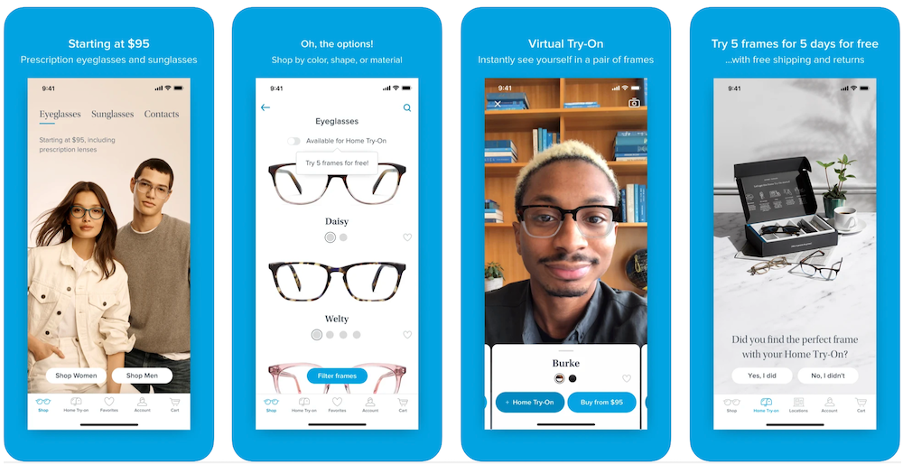
Nike
Nike also uses AR technology to measure your feet so that you can “try on” and buy the latest sneakers that fit perfectly. Nike says it can measure each foot individually — the size, shape, and volume — with accuracy within 2 millimeters:
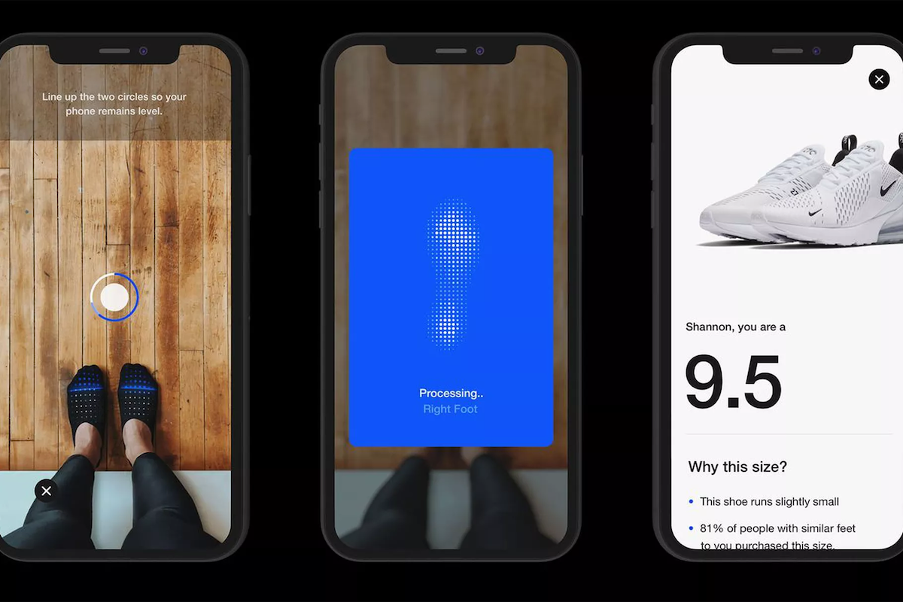
No more wondering how the shoes will look on you — look and try before you buy.
Sephora
Cosmetics is another prime user of AR technology. For instance, Sephora’s Virtual Artist app scans your face, figures out where your lips and eyes are, and lets you try virtual makeup on at home:

YouCam Makeup
Similarly, YouCam Makeup allows shoppers to test makeup from many of the major brands with AR technology:
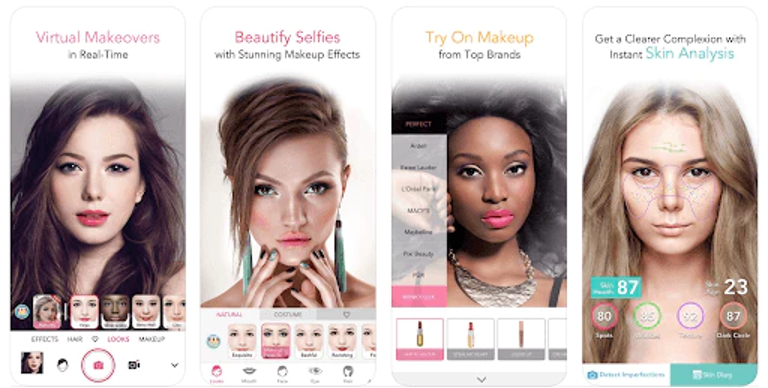
Houzz
AR can be used to help customers visualize how furniture will look in their homes. They can check what types of furniture fit into their space without it being too cramped and see which colors complement or clash with existing furnishings.
Houzz is one of the top AR apps for planning interior design and layouts, and also allows users to browse and buy products in-app. Its “View in My Room” feature uses AR technology to place products into a photo of the user’s home and even shows what the outcome will look like in different lighting:
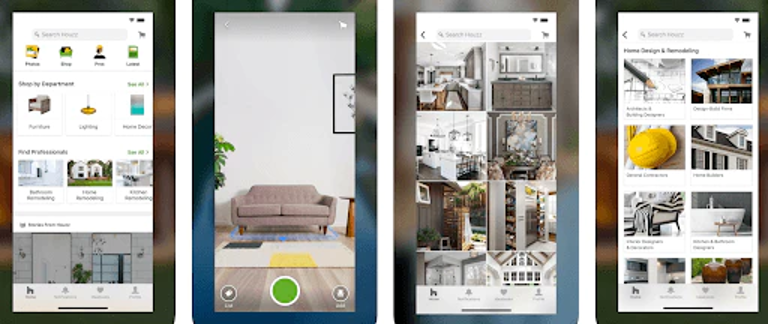
IKEA
IKEA is another retailer taking advantage of AR technology with its interactive catalog. IKEA Place lets you virtually place true-to-scale 3D models in your very own living space. You can furnish a whole room in just one tap or find the perfect product by searching with your camera.
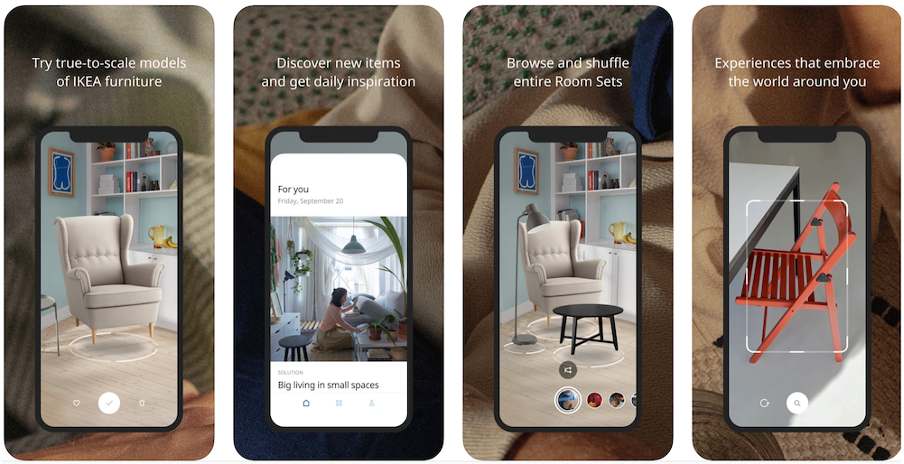
Quiver
AR is not only for grown-ups – kids can also enjoy it, too. For instance, Quiver lets children download, print, and color-in pictures. When they’ve finished, they can use the Quiver app to bring their picture to life for an interactive playing experience:
LEGO
Lego offers kids an interactive experience with its Hidden Side AR app by layering a ghost-hunting game over their physical creations.
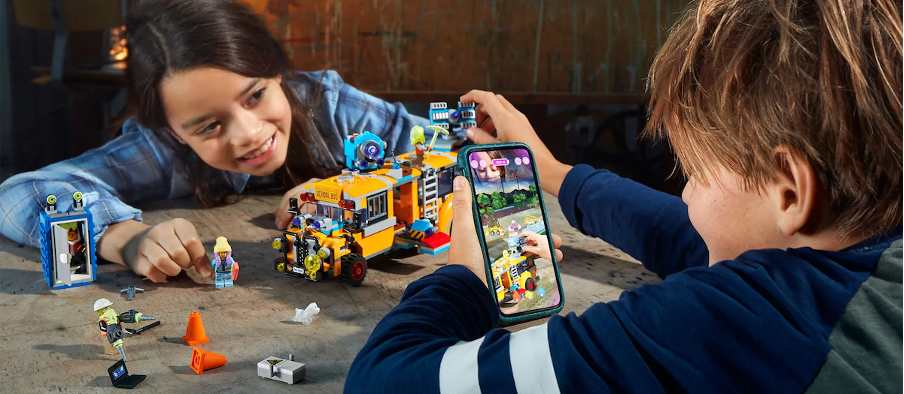
As they scan different colored disks in each playset, they unleash a world of supernatural shenanigans – revealing the mysterious Hidden Side behind the set!
How to Harness the Power of Augmented Reality in Ecommerce
AR allows ecommerce customers to preview products in their own space and time, before deciding to make a purchase. Using AR, your brand can generate more buzz, increase sales, and improve customer satisfaction.
Augmented Reality in Ecommerce
The latest stats confirm how AR is changing the ecommerce landscape:
- AR expenditure is expected to reach $60 billion by 2020.
- 61% of online shoppers prefer to make purchases on sites that offer AR technology.
- 63% of customers say AR would transform their shopping experience.
- 51% of customers feel that retailers are failing to take full advantage of AR.
70% of consumers are expected to be more loyal to brands incorporating AR as part of their shopping experience.
Here are four ways you can harness the power of AR in ecommerce.
1. Social media
Instagram, Snapchat, and TikTok all offer AR filters that anyone can apply to their photos. Brands also use AR filters as they’re fun to use and help their images stand out from the crowd. For instance, you can:
- Increase brand (or product) awareness: AR filters are a great way to showcase your new product by allowing people to ‘test’ how it’ll look on them.
- Increase engagement: AR filters are an excellent way to increase audience engagement. For example, you can encourage people to tag your brand in their stories when they use the filter to enter a competition.
- Generate more buzz: AR filters can help showcase what makes your product special and make it stand out from all the other brands on social media.
For example, the Italian cosmetics brand, We MakeUp, launched an AR filter on Facebook that allowed users to test out different shades of its lipstick. Users were able to find their perfect match and make the purchase right away.

The campaign was a massive success with a 7.9-point lift in brand awareness, 53% higher CTR, and a 28% increase in sales compared to video-only ads.
2. Product preview
In ecommerce, customers frequently purchase the wrong item because they can’t physically handle the product or visualize how it will look in their homes. You know how difficult it is to imagine how a new sofa will look in your living room, even if you have the dimensions and a photo of other furnishings.
According to Shopify, ecommerce returns can be up to five times higher than those for goods purchased in brick-and-mortar stores.
AR technology allows you to place your product in a customer’s home. For example, Sony created their Envision TV AR app for customers to see how the Sony TV they want fits the wall or space they had in mind for it.
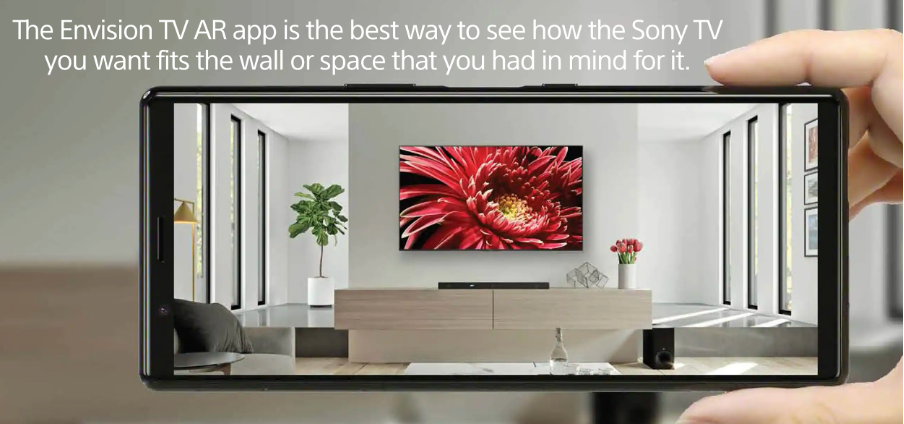
3. Virtual try-on
According to a report by customer experience platform Narvar, the number one reason consumers return goods from ecommerce stores like Amazon (34%) and other retailers (46%) was the wrong size, fit, or color.
One way you can reduce returns is by allowing customers to (virtually) try on the clothing or footwear before they purchase.
For example, the Goat app lets you try on coveted sneaker styles using AR technology. Simply tilt your phone downwards to make the latest Nike Dunks or Air Jordans magically appear on your feet:
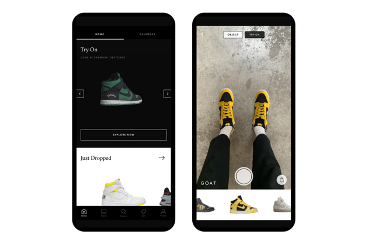
DTC brand, Allbirds, uses the same AR technology to let customers try before they buy:
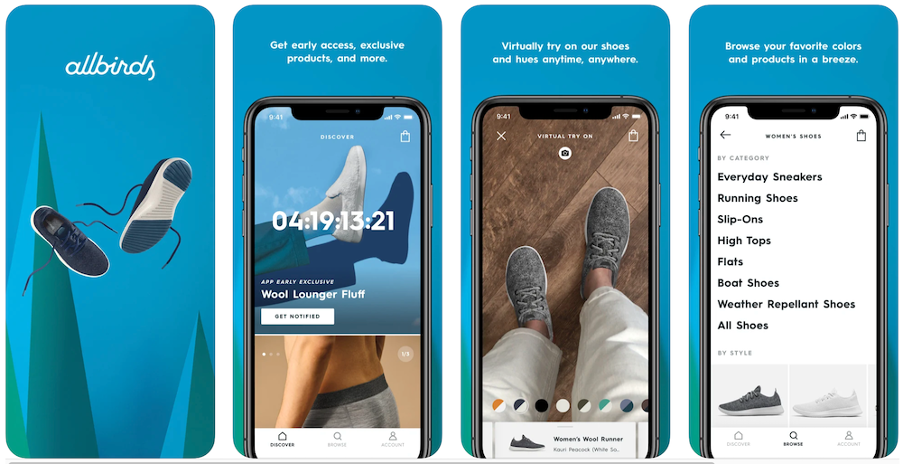
4. AR-based user manual
As well as making sales more intuitive, you can use AR technology in your user manuals. Typically, user instructions can be quite dull and boring, but AR lets you bring your products to life so that customers enjoy an interactive learning experience.
If customers understand and enjoy your products better, especially electronic products and gadgets, there’s less chance they’ll return them.
With an AR user manual, all the customer has to do is scan the product and see what each button does. For example, here’s a video of a coffee machine AR manual, which shows different kinds of coffee, hot water, automatic cleaning, and stand-by mode.
To summarize, you can harness the power of AR in ecommerce to:
- Generate more buzz on social media.
- Increase sales by allowing customers to preview before they buy.
- Reduce returns by letting customers try before they buy.
- Improve the customer experience with AR-based user manuals.
Augmented Reality in a Nutshell
From placing a sofa in your living room to fitting new sneakers on your feet or applying makeup, AR is making it easier for ecommerce brands to:
- Increase customer engagement
- Attract new shoppers
- Boost conversion rates
- Increase prices
- Reduce returns
Using AR, your brand can generate more buzz, increase sales, reduce returns, and improve customer satisfaction.
